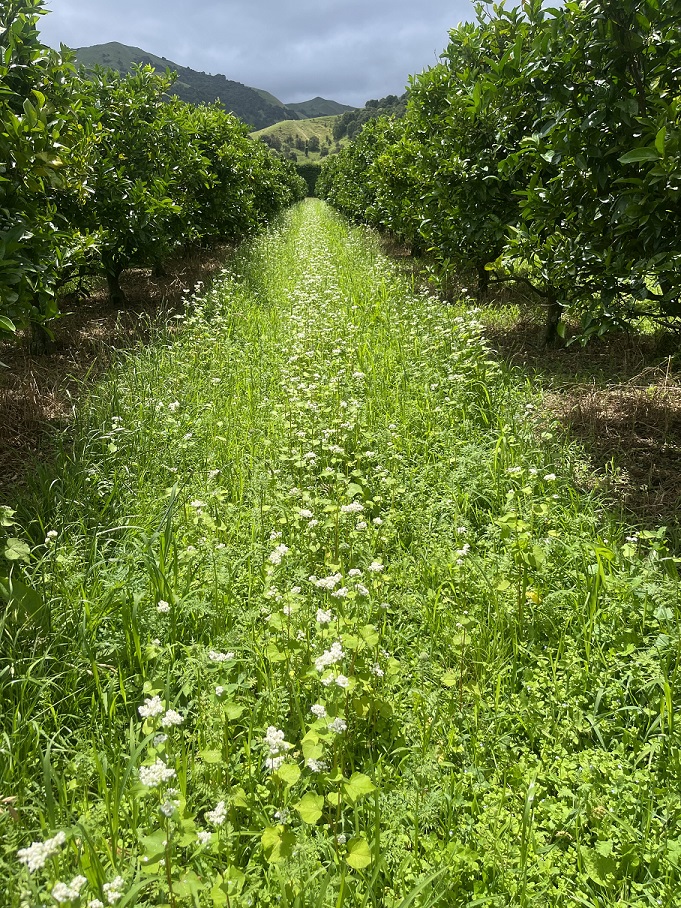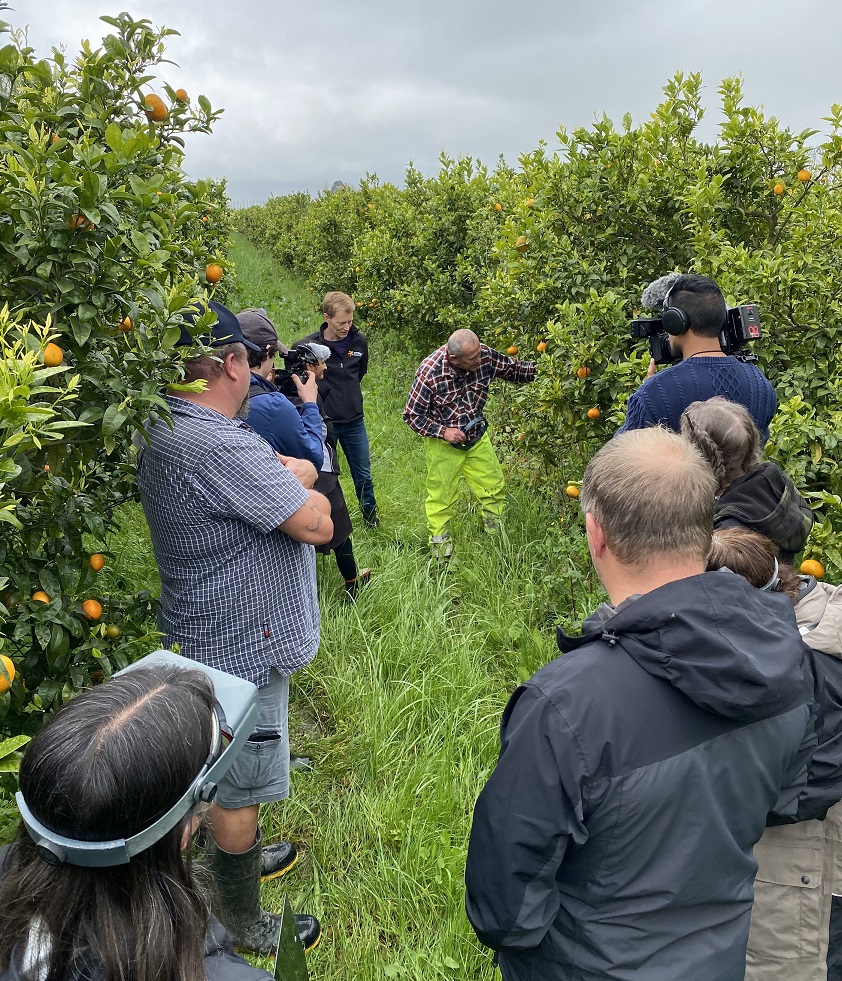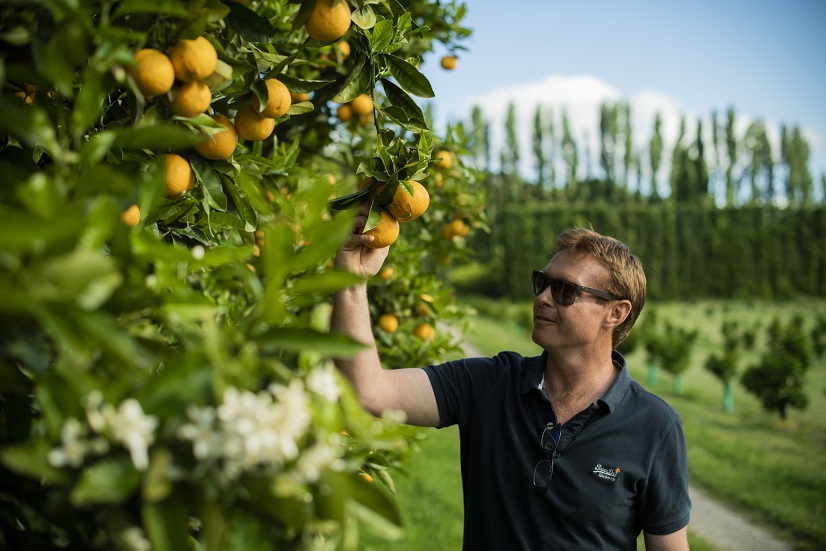As a partner in one of the first A Lighter Touch demonstration projects, two years on Citrus New Zealand is seeing knowledge from the project being applied by growers on orchard.
Two Gisborne citrus orchards were the model crop production system for the A Lighter Touch project focusing on biodiverse understory planting in perennial crops. The aim of the project was to develop an understanding of how overall biodiversity and specific natural enemies could be enhanced to better manage insect pests and to reduce reliance on agrichemicals.
Citrus New Zealand board member Matt Carter, who is also a citrus grower and Field Service and New Product Development Manager with grower group First Fresh Ltd, says he is seeing more and more growers choosing to sow the same or similar understory seed mix to that used in the project when they are planting or replanting a block.
“I wouldn’t say its mainstream yet, but people are always asking about it and for details of the seed mix from the project. We’re seeing a lot more of these diverse pasture species in citrus blocks now.”

The understory established in a GIsborne citrus orchard, one of the first demonstration projects in the A Lighter Touch programme.
Matt sees the involvement in the biodiverse understory planting project, more commonly known as the “citrus project”, as one of the major contribution’s Citrus New Zealand has made to the A Lighter Touch programme.
“Citrus New Zealand put its hand up to be the host crop for the project, and it’s been very beneficial, both for Citrus and for the wider groups. We got a lot of good resources out of it, which citrus growers and growers from other sectors can use.” These resources can be found here.
Beginning in May 2021 and ending in June 2023, the project was impacted by both the second national Covid lockdown in August 2021, and then by extreme weather events, including Cyclone Gabrielle.
Despite these challenges, the project hosted two field days sharing knowledge from the project and produced grower guides and video resources providing details of how to implement biodiverse planting in an orchard environment, the seed mix and equipment required, insect monitoring, and management and maintenance of the planting.

Scouting and other field day activity being recorded as part of production of grower resources from the understory project in citrus orchards.
Matt says the anecdotal experience of citrus growers implementing the biodiverse understory is that in addition to an increasing number of beneficial insects being present in the orchard, the clovers, lucerne and different grass species in the seed mix are also producing soil benefits, including nitrogen fixing and better soil structure.
Summerfruit New Zealand has taken the knowledge gained through the citrus project, and leveraged it, tailoring it to a different crop and growing environment in Central Otago. Insect monitoring and soil analyses are being undertaken to quantify the impact of the increased biodiversity in the understory.
It is collaboration and knowledge sharing like this that was one of the main drivers for Citrus New Zealand joining the A Lighter Touch programme when it was established.
“Citrus New Zealand had been doing its own research and development for years, but as a relatively small sector our budget is limited, and trial work can be very expensive when you’re working on it on your own.
“We really saw the benefit of working in with all the different product groups and having the leverage to access and trial different biological products. It’s something we’d never be able to do on our own.”
With many pests being common to multiple crops, there is potential for trial results from work done in other crops, such as thrips control in onions, to provide useful information to inform work being done in citrus.
“We’re doing some trial work with products for thrips and whitefly – they’re our two main pest problems. We’re trialling new conventional chemistry, selective chemistry, but also a lot of new biologicals. And it’s through ALT we’ve got access to those products – if we were going to the manufacturers on our own, as a smaller industry they probably wouldn’t release those products to us to trial. So that’s a really big benefit for our sector in being part of ALT.”

Citrus NZ board member and grower Matt Carter.
Matt says the collaboration enabled through A Lighter Touch is beneficial in other ways too. Events like the annual Gaps workshop bring together representatives of all 14 product groups, and Matt sees this as a valuable opportunity to network and learn what other sectors are doing, particularly for smaller product groups.
Like other sectors, Citrus New Zealand is facing challenges in terms of profitability and sustainability. “We know we’re going to lose some older chemistry which impacts on industry viability too, so these trials are really important to make sure we’ve got something to control these pests as we go forward.”
While the majority of citrus grown in New Zealand supplies the local market, Meyer lemons as well as some varieties of oranges and limes are sold to overseas customers, and there’s potential for export growth. “It’s quality and quantity that we need if we’re going to sell more offshore.”
With market access requirements limiting the crop protection tools available to growers, Citrus New Zealand is hoping to see new products becoming available through the work of A Lighter Touch.
“New products coming through are going to be key to keeping access to those export markets sustainable in the future.”